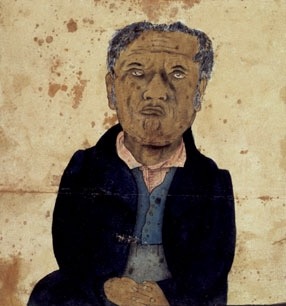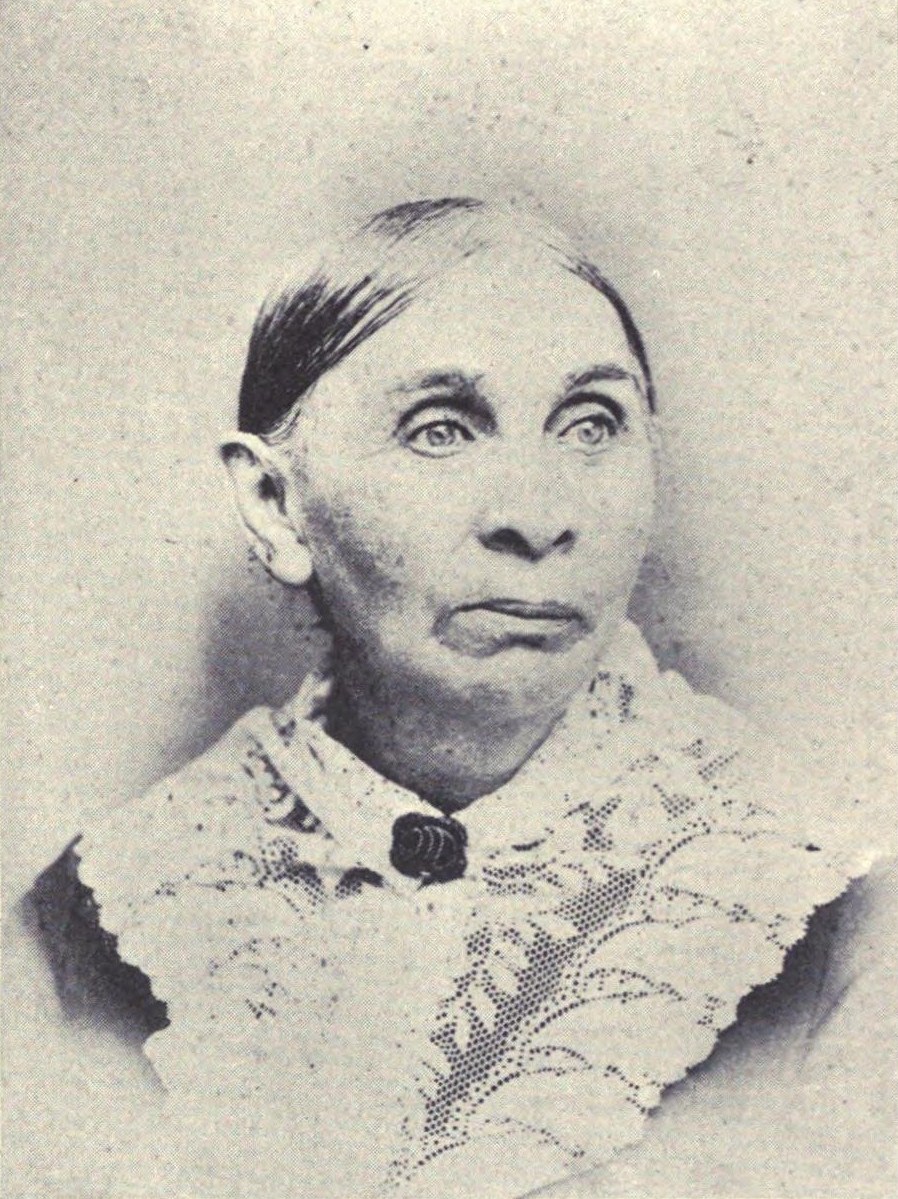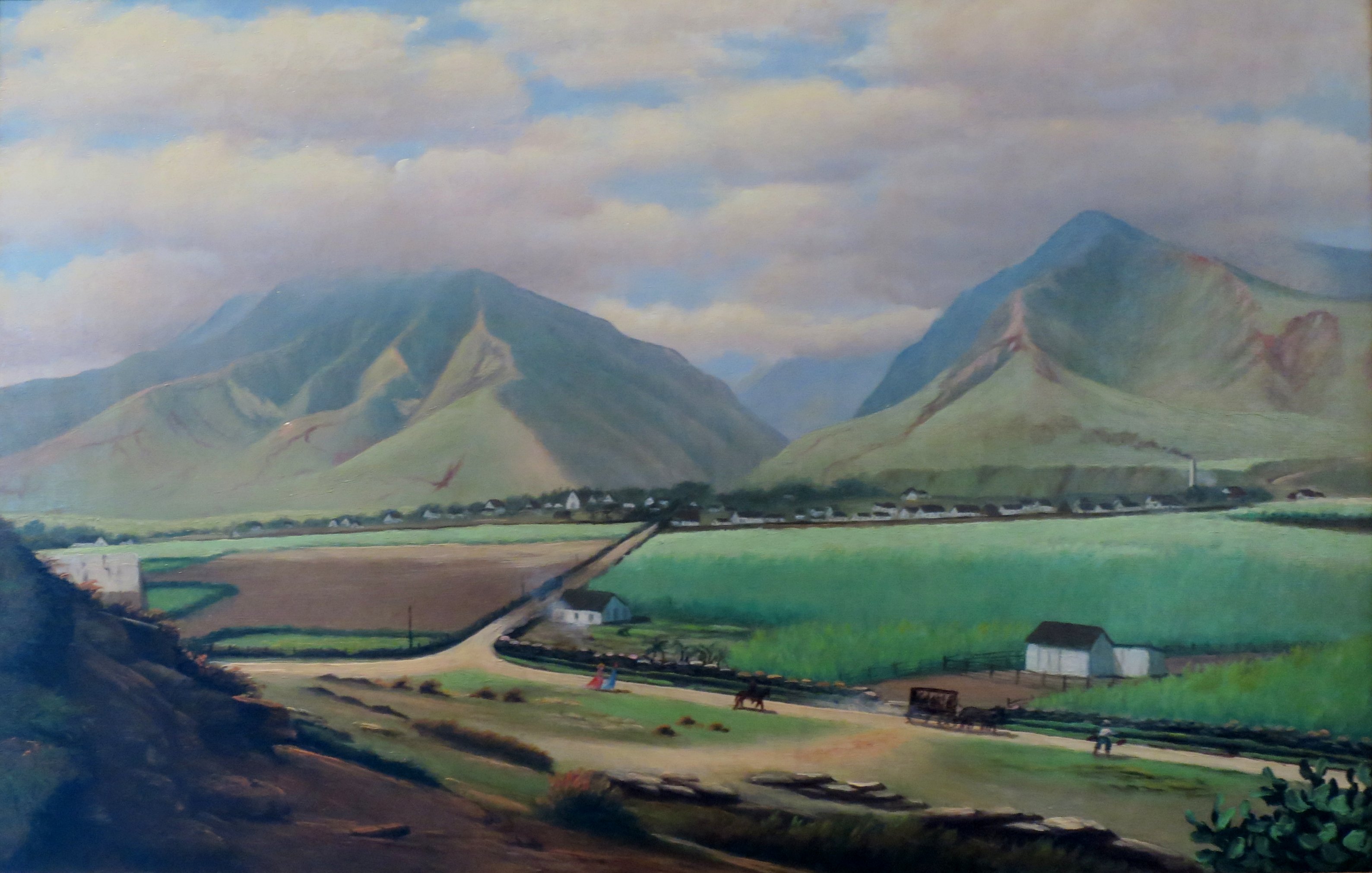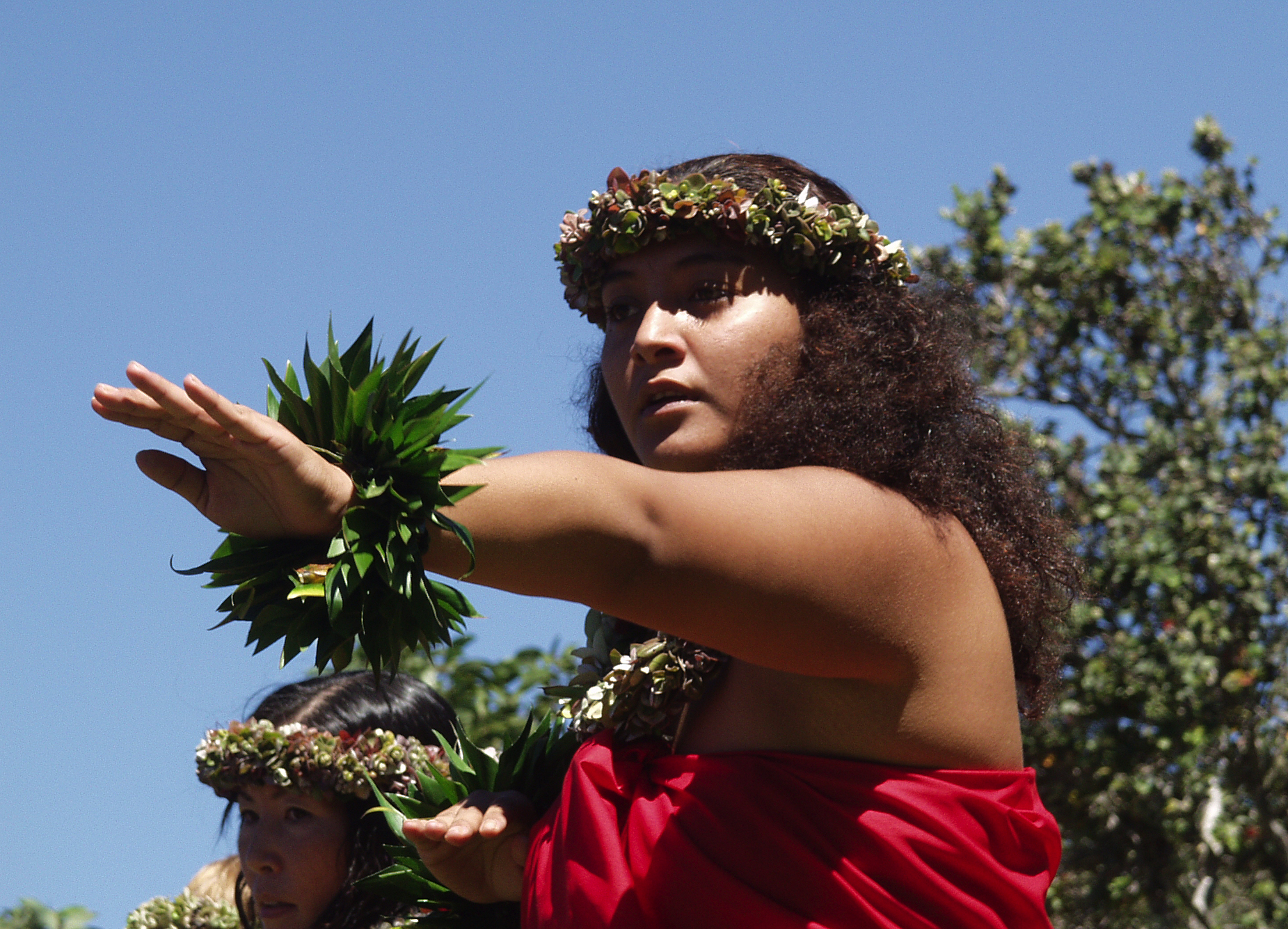|
Puaaiki
Bartimeus Lalana Puaʻaiki ( – February 21, 1844) was an early convert and the first Native Hawaiian to be licensed to preach Protestant Christianity. Prior to his conversion, he served as a hula dancer in the court of King Kamehameha II and Queen Kamāmalu. Life Born circa 1785, in Waikapu on the island of Maui, Puaʻaiki was encumbered with birth defects which rendered him short-statured and visually impaired (partially blind) in later life. His mother attempted to bury him but a solicitous relative rescued him. He was given the name Puaʻaiki meaning "little pig" in the Hawaiian language. In the court of King Kamehameha II he served as a hula dancer and was a member of the retinue of Queen Kamāmalu. After the arrival of Christian missionaries in 1820, he converted to the new faith. After conversion, he became known as the "Blind Preacher of Maui" or "Blind Bartimeus", after the Biblical Bartimaeus who was healed by Jesus.; ; In 1841, Puaʻaiki became the first Native H ... [...More Info...] [...Related Items...] OR: [Wikipedia] [Google] [Baidu] |
Jonathan Smith Green
Jonathan Smith Green (September 29, 1796 – January 5, 1878) was a missionary from New England to the Kingdom of Hawaii. Life Green was born December 20, 1796 in Lebanon, Connecticut, to Beriah and Elizabeth Green. He graduated from Andover Seminary and on September 20, 1827 he married Theodosia Arnold (1792–1859) of East Haddam, Connecticut. They traveled to Honolulu by March 30, 1828 on the ''Parthian'', as part of the third company from the American Board of Commissioners for Foreign Missions. Other members of this company were Lorrin Andrews and Gerrit P. Judd. He left his wife an exploratory took a trip to the Pacific Northwest coast of America in 1829 for the mission. The family was assigned to Lahaina, Hawaii, on the island of Maui until 1831, then Hilo for one year. In 1833 they moved to Wailuku, Hawaii, back on Maui, and built one of the first permanent houses there. In 1836 the Greens founded a girls' boarding school called the Wailuku Female Seminary. Their house is ... [...More Info...] [...Related Items...] OR: [Wikipedia] [Google] [Baidu] |
Maui
The island of Maui (; Hawaiian: ) is the second-largest of the islands of the state of Hawaii at 727.2 square miles (1,883 km2) and is the 17th largest island in the United States. Maui is the largest of Maui County's four islands, which also includes Molokai, Lānai, and unpopulated Kahoolawe. In 2020, Maui had a population of 168,307, the third-highest of the Hawaiian Islands, behind that of Oahu and Hawaii Island. Kahului is the largest census-designated place (CDP) on the island with a population of 26,337 , and is the commercial and financial hub of the island. Wailuku is the seat of Maui County and is the third-largest CDP . Other significant places include Kīhei (including Wailea and Makena in the Kihei Town CDP, the island's second-most-populated CDP), Lāhainā (including Kāanapali and Kapalua in the Lāhainā Town CDP), Makawao, Pukalani, Pāia, Kula, Haikū, and Hāna. Etymology Native Hawaiian tradition gives the origin of the island's name in th ... [...More Info...] [...Related Items...] OR: [Wikipedia] [Google] [Baidu] |
Wailuku
Wailuku is a census-designated place (CDP) in and county seat of Maui County, Hawaii, United States. The population was 17,697 at the 2020 census. Wailuku is located just west of Kahului, at the mouth of the Iao Valley. In the early 20th century Wailuku was the main tourist destination on Maui, though it has since been eclipsed with the rise of the resort towns such as Kaanapali. Historic sites in the town include Kaʻahumanu Church (named after Queen Kaʻahumanu, wife of Kamehameha I) which dates to 1876, the Wailuku Civic Center Historic District, the site of the Chee Kung Tong Society Building, and the Bailey House, a 19th-century former seminary and home that houses a history museum and the Maui Historical Society. There are two ancient temples near Wailuku, called — the Halekiʻi Heiau and the Pihanakalani Heiau. Both date back hundreds of years and were used for religious purposes by the native Hawaiians. Wailuku is served by Kahului Airport. Geography Wail ... [...More Info...] [...Related Items...] OR: [Wikipedia] [Google] [Baidu] |
Hula Dancers
Hula () is a Hawaiian dance form accompanied by chant (oli) or song (mele). It was developed in the Hawaiian Islands by the Native Hawaiians who originally settled there. The hula dramatizes or portrays the words of the oli or mele in a visual dance form. There are many sub-styles of hula, with the main two categories being Hula ʻAuana and Hula Kahiko. Ancient hula, as performed before Western encounters with Hawaii, is called ''kahiko''. It is accompanied by chant and traditional instruments. Hula, as it evolved under Western influence in the 19th and 20th centuries, is called ''auana'' (a word that means "to wander" or "drift"). It is accompanied by song and Western-influenced musical instruments such as the guitar, the ukulele, and the double bass. Terminology for two main additional categories is beginning to enter the hula lexicon: "Monarchy" includes any hula which were composed and choreographed during the 19th century. During that time the influx of Western cultur ... [...More Info...] [...Related Items...] OR: [Wikipedia] [Google] [Baidu] |
Hawaiian Kingdom Protestants
Hawaiian may refer to: * Native Hawaiians, the current term for the indigenous people of the Hawaiian Islands or their descendants * Hawaii state residents, regardless of ancestry (only used outside of Hawaii) * Hawaiian language Historic uses * things and people of the Kingdom of Hawaii, during the period from 1795 to 1893 * things and people of the Republic of Hawaii, the short period between the overthrow of the monarchy and U.S. annexation * things and people of the Territory of Hawaii, during the period the area was a U.S. territory from 1898 to 1959 * things and people of the Sandwich Islands, the name used for the Hawaiian Islands around the end of the 18th century Other uses * Hawaiian Airlines, a commercial airline based in Hawaii * Hawaiian pizza, a style of pizza topped with pineapple See also * Hawaiians (other) * Hawaiian cuisine (other) * Hawaiian Islands * Hawaiian kinship Hawaiian kinship, also referred to as the generational system, is a kin ... [...More Info...] [...Related Items...] OR: [Wikipedia] [Google] [Baidu] |
People From Maui
A person ( : people) is a being that has certain capacities or attributes such as reason, morality, consciousness or self-consciousness, and being a part of a culturally established form of social relations such as kinship, ownership of property, or legal responsibility. The defining features of personhood and, consequently, what makes a person count as a person, differ widely among cultures and contexts. In addition to the question of personhood, of what makes a being count as a person to begin with, there are further questions about personal identity and self: both about what makes any particular person that particular person instead of another, and about what makes a person at one time the same person as they were or will be at another time despite any intervening changes. The plural form "people" is often used to refer to an entire nation or ethnic group (as in "a people"), and this was the original meaning of the word; it subsequently acquired its use as a plural form of per ... [...More Info...] [...Related Items...] OR: [Wikipedia] [Google] [Baidu] |
1844 Deaths
In the Philippines, it was the only leap year with 365 days, as December 31 was skipped when 1845 began after December 30. Events January–March * January 15 – The University of Notre Dame, based in the city of the same name, receives its charter from Indiana. * February 27 – The Dominican Republic gains independence from Haiti. * February 28 – A gun on the USS ''Princeton'' explodes while the boat is on a Potomac River cruise, killing two United States Cabinet members and several others. * March 8 ** King Oscar I ascends to the throne of Sweden–Norway upon the death of his father, Charles XIV/III John. ** The Althing, the parliament of Iceland, is reopened after 45 years of closure. * March 9 – Giuseppe Verdi's opera '' Ernani'' debuts at Teatro La Fenice, Venice. * March 12 – The Columbus and Xenia Railroad, the first railroad planned to be built in Ohio, is chartered. * March 13 – The dictator Carlos Antonio López becomes first President of P ... [...More Info...] [...Related Items...] OR: [Wikipedia] [Google] [Baidu] |
1785 Births
Events January–March * January 1 – The first issue of the ''Daily Universal Register'', later known as ''The Times'', is published in London. * January 7 – Frenchman Jean-Pierre Blanchard and American John Jeffries travel from Dover, England to Calais, France in a hydrogen gas balloon, becoming the first to cross the English Channel by air. * January 11 – Richard Henry Lee is elected as President of the U.S. Congress of the Confederation.''Harper's Encyclopaedia of United States History from 458 A. D. to 1909'', ed. by Benson John Lossing and, Woodrow Wilson (Harper & Brothers, 1910) p167 * January 20 – Battle of Rạch Gầm-Xoài Mút: Invading Siamese forces, attempting to exploit the political chaos in Vietnam, are ambushed and annihilated at the Mekong River, by the Tây Sơn. * January 27 – The University of Georgia in the United States is chartered by the Georgia General Assembly meeting in Savannah. The first students are ad ... [...More Info...] [...Related Items...] OR: [Wikipedia] [Google] [Baidu] |
University Of Canterbury
The University of Canterbury ( mi, Te Whare Wānanga o Waitaha; postnominal abbreviation ''Cantuar.'' or ''Cant.'' for ''Cantuariensis'', the Latin name for Canterbury) is a public research university based in Christchurch, New Zealand. It was founded in 1873 as Canterbury College, the first constituent college of the University of New Zealand. It is New Zealand's second-oldest university, after the University of Otago, itself founded four years earlier in 1869. Its original campus was in the Christchurch Central City, but in 1961 it became an independent university and began moving out of its original neo-gothic buildings, which were re-purposed as the Christchurch Arts Centre. The move was completed on 1 May 1975 and the university now operates its main campus in the Christchurch suburb of Ilam. The university is well known for its Engineering and Science programmes, with its Civil Engineering programme ranked 9th in the world (Academic Ranking of World Universities, 2021). ... [...More Info...] [...Related Items...] OR: [Wikipedia] [Google] [Baidu] |
University Of Hawaii Press
A university () is an institution of higher (or tertiary) education and research which awards academic degrees in several academic disciplines. Universities typically offer both undergraduate and postgraduate programs. In the United States, the designation is reserved for colleges that have a graduate school. The word ''university'' is derived from the Latin ''universitas magistrorum et scholarium'', which roughly means "community of teachers and scholars". The first universities were created in Europe by Catholic Church monks. The University of Bologna (''Università di Bologna''), founded in 1088, is the first university in the sense of: *Being a high degree-awarding institute. *Having independence from the ecclesiastic schools, although conducted by both clergy and non-clergy. *Using the word ''universitas'' (which was coined at its foundation). *Issuing secular and non-secular degrees: grammar, rhetoric, logic, theology, canon law, notarial law.Hunt Janin: "The university i ... [...More Info...] [...Related Items...] OR: [Wikipedia] [Google] [Baidu] |





_1938.jpg)
.jpg)

